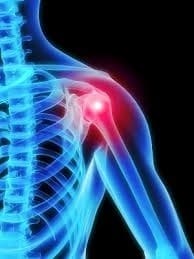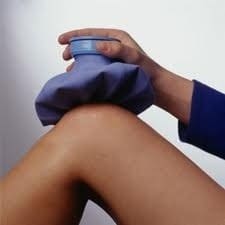 Here at the International School House one of the common problems we face with our students are injuries from PT. Most are injuries to feet, knees and shoulders. No surprise, as these are the high use joints and muscles used in swimming and running. This isn’t an issue limited to international students, as many U.S. military people are injured everyday during PT sessions. The causes of these injuries aren’t as obvious as they might appear to be. You may think that its just a matter of poor conditioning. That is surely part of it, but I’ve seen many people that are in outstanding condition go down with an injury. Based on my own experience and observation (over many years) I think there are 4 main causes of PT injuries (not including the obvious like falling, misplacing a step, twisting an joint, etc)
Here at the International School House one of the common problems we face with our students are injuries from PT. Most are injuries to feet, knees and shoulders. No surprise, as these are the high use joints and muscles used in swimming and running. This isn’t an issue limited to international students, as many U.S. military people are injured everyday during PT sessions. The causes of these injuries aren’t as obvious as they might appear to be. You may think that its just a matter of poor conditioning. That is surely part of it, but I’ve seen many people that are in outstanding condition go down with an injury. Based on my own experience and observation (over many years) I think there are 4 main causes of PT injuries (not including the obvious like falling, misplacing a step, twisting an joint, etc)
1) Improper Warmup and Cool down: Jumping cold into an intense PT session without a proper warmup is a sure way to injure yourself. In my book Corps Strength, I outline a simple and effective warmup that properly transitions your body from a rested state into one that is ready for PT. This is an essential element in injury prevention. You can’t sell this process short, your body needs this transition. You also need to stretch out after PT, this also can go along way in preventing injuries as you are much better able to stretch throughly after PT when your body is warm. A better stretch will increase your range of motion, and more range of motion = less chance of pulling a muscle.
2) Over training: This is the most common cause of injury with people that are in good condition. Highly motivated people tend to always push themselves too far, I do this at least once a year. If you’re going to PT hard, you’ve got to give your body time to recover. Its that simple, listen to your body and take time off when you need it. Eating right is also part of this, if you don’t feed your engine with the right fuel, your body will run out of energy and the ability to recovery from an intense effort. A lack of appetite is a sign of overtraining.
3) Too rapid a progression: To get in top shape you have to gradually ramp up the duration and intensity of your routine. We all know this, however this needs to be gradual process. From my experience there are three stages to getting in shape. Toughening, Slow Improvement and Sustainment. Each stage takes about 30 days. getting you from poor to excellent condition in about 90 days. The problem arises when people think they can not exercise for months (or even years) then workout like a maniac for a few weeks and be in shape. Doesn’t work that way tough guy. You can only improve so much, so fast. Pushing that time frame will surely get you injured, or at least burnt out quick.
4) Monotonous routine: Doing the same thing, everyday will lead to injury. Do heavy bench presses, or run 10 miles everyday, and at some point your body will say enough. Your need variety to not only avoid injury but keep your body and attitude fresh and motivated. I’m a big believer in this, always have been, and I’m sure its helped me maintain a pretty intense, mostly injury free PT program for over 35 years.
 The bottom line is that you can’t 100% prevent injury if you PT hard on a regular basis. However you can minimize the frequency and severity of these injuries by using your head and following the basic tried and true principles of a solid PT program. Working hard to keep yourself in top condition is smart, breaking yourself before you even get to the fight is stupid. Good luck and be safe.
The bottom line is that you can’t 100% prevent injury if you PT hard on a regular basis. However you can minimize the frequency and severity of these injuries by using your head and following the basic tried and true principles of a solid PT program. Working hard to keep yourself in top condition is smart, breaking yourself before you even get to the fight is stupid. Good luck and be safe.
Semper Fi
MGunz


Here is a great warm up the trainers for our Fire Department developed based on the standards for the FMS (functional movement screen).
http://www.youtube.com/watch?v=umin0AMrqO8
We’ve found that it preps the body for movement quickly and efficiently, as well as reducing our overall injuries from related activities.
FMS is faulty…a poor predictor of athleic ability. For an appropriate warm up based on valid flexibility science, Google Chris and Ann Frederick’s dynamic warm up series.
http://www.abstractsonline.com/Plan/ViewAbstract.aspx?sKey=3471bd30-de32-434b-97bf-8843dc67f729&cKey=05514464-9393-4ab1-9282-8476f9d6463f&mKey=%7B293D37C7-E0D3-43C4-A4E3-28C8D240C5AC%7D
A proper cool down is important…however, stretching postworkout is not considered a cool down…nor will it prevent injuries…it’s actually the opposite. Stretching after workout, when your muscles are fatigued and warm from exercise actually increases you risk of injury…it makes over stretching extremely possible. This explains the higher risk of overstretch injuries from Bikram yoga.
Sorry Jess, I don’t buy it. After over 3 decades of training 1000’s of U.S. Marines, International Military and many assorted civilians (of all ages and fitness levels). I have never seen or even heard of anyone injuring themselves from a proper series of post workout stretches. Note I said a PROPER series of stretches. Nor would I consider Bikram Yoga a proper way to stretch out. IMO it is an extreme method, and dangerous to those trying it without proper supervision. I have however seen more injuries than I can count from people who don’t regularly stretch and gradually increase their flexibility. All professional athletes and dancers utilize comprehensive stretching programs in their conditioning routines, and its common knowledge that the best time to stretch is immediately after your workout when your muscles are warm. For some great info on this, check out Bob Anderson’s book “Stretching”. It’s been a best seller for over 30 years, and widely considered the best book ever written on the subject. If people didn’t find his stretching methods (which I recommend in my book) effective in helping them become more flexible, and keeping them injury free, it wouldn’t have sold over 3 1/2 million copies.
MGunz
“Overtraining / This is the most common cause of injury”
No, it’s not. While yes, “true” overtraining does affect performance, injury risk, and development, it is incredibly rare. It’s wholly different from the general performance issues that come from improper recovery protocols, a mediocre level of general conditioning or work capacity, or overuse. These are problems that come more from *under-training* and just plain awful programming. (In other words, you’re not tired and weak because you’re training too much; your tired because after 6 weeks, “endurance” training is counterproductive. Plus, you’re probably eating like crap.)
Incidentally, excluding injuries sustained through direct trauma, among the best predictors of training-injury potential are one’s level of structural balance and peak power.
“three stages to getting in shape. Toughening, Slow Improvement and Sustainment.”
I know those words, but this sentence doesn’t make any sense.
@JB
“FMS is faulty…a poor predictor of athletic ability.”
Yes … but that’s not its purpose.
Chris and Ann Frederick’s take on stretching is pretty good, though.
@MGUNZ
“it’s common knowledge that the best time to stretch is immediately after your workout”
While there are benefits to post stretching post workout, it’s absolutely incorrect to say it (or any time) is the best time to stretch. It all depends on the type of stretching, the goal, and the person. For example, to maximize flexibility gained from strength training, four to six hours after strength training is probably the optimal time, using a range of methods. And, “cold” stretching and training may in some cases offer be more effective re flexibility gains.
Yeah, the body of “common knowledge” also sometimes talks about how stretching increasing muscle length, so….
Let’s be clear: there probably is no topic in strength and conditioning which exhibits such a wide divergence in opinion as the uses and value of stretching (or even the meaning of ‘flexibility’). The the closest thing to a consensus would be that there is no global mechanism that regulates flexibility, and that, by itself, stretching plays a very limited role in injury prevention and performance compared to tissue quality, structural balance, joint mobility, proper movement patterns, etc. re the etiology of movement dysfunction.
“If people didn’t find his stretching … it wouldn’t have sold over 3 1/2 million copies.”
Uh, yeah, that a book is popular precisely because it appeals to people who don’t know anything about a topic is not especially availing. Especially when it’s a book that only in recent reprint (briefly) covers things like PNF and other protocols that have been in practice longer than the book has been around (plus, seems oblivious to issues of joint mobility, pattern and structural dysfunction, and pretty much the entire notion of a myofascial chain).
JohnC,
Sounds like you are pretty much an expert in everything here, so obviously you don’t need my advice, Bob Anderson’s or anyone else’s. I’m just an old Marine who basis his recommendations on actual observation, while you seem to have an insight to these issues that go beyond years of experience, training or education. When is your book coming out?
Training guides based on anecdata are awesome!
Actually, I’ve been a bit unfair. I assumed it was something more substantial than Fitness for Dummies, circa 1972. Carry on.
Training guidelines given by people who obviously have no actual practical experience training real people, int he real world (like yourself), are for the most part a waste of time. But have at it, you’re not the first person I’ve encountered that is educated beyond their intelligence and you won’t be the last I’m sure.